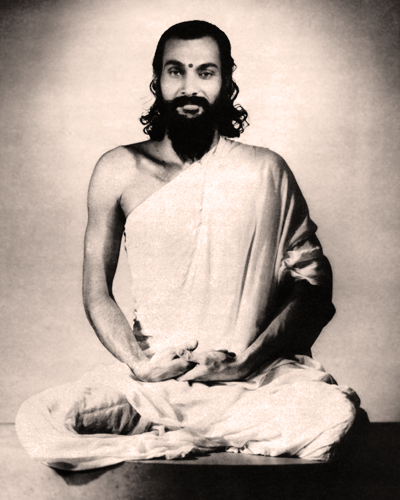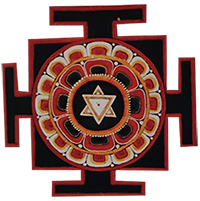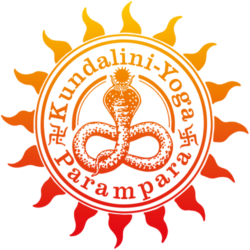
Like his life and death, Swami Dhirendra Brahmachari’s origin is shrouded in mystery. Some sources say that he was born as a Brahmin son in the village of Chandpura in the north Indian state of Bihar, others speak of a village in Kashmir. There is no information about his date of birth, which led to speculation about his age throughout his life. As he said of himself, he was a wild, naughty boy with a great thirst for adventure, which often led him into difficult and dangerous situations. At the age of twelve, he read in the Bhagavad Gita how Krishna says to Arjuna, “The Yogi is greater than the ascetics, he is greater than the knowledgeable, greater than those who perform ritual acts; therefore become a Yogi!” Then he decided to become a Yogi. He pursued this path as a young man with great tenacity and devotion, and he left his family early to find a Guru. He sought out many masters, but despite all his efforts, it seemed impossible at first to find the one personal Guru, for many so-called masters turned out to be charlatans or they made demands of him regarding clothing and hairstyle, which the headstrong, stubborn young man did not accept.
After years of wandering, he seemed to be stranded completely impoverished. About this dark time of despair he said himself: “I had no more ideas of a Guru, my mind was absolutely empty. But only when life is black like a black board can you write something new on it; only where there is absolute emptiness can you pour something new into it; only when there are no more ideas of one’s own is the person ready to recognise and accept something new – or the absolute. It is a state between absolute surrender and being open to the divine or whatever is called its opposite.” Eventually, he met his Guru Maharshi Kartikeya, who introduced him to various Yoga techniques at his Ashram in Gopal Khera near Lucknow. There he practised Pranayama in an underground cave and succeeded in achieving a state of complete inner peace, which led him to the higher levels of Yoga. Now he had become a Swami, a Siddha and Yoga master, and his Guru instructed him to teach the Yoga-Kriyas in public.
In 1956, his first book Yogic Sukshma Vyayama was published in Calcutta, and people from all walks of life were attracted by his charismatic personality to learn more about real Yoga practice. Swamiji settled in New Delhi and first became the teacher of the then Indian Prime Minister Jawaharlal Nehru and later mentor to his daughter, the future Prime Minister Indira Gandhi and her family. In 1970, his second book Yogasana Vijnana was published, undoubtedly the best work ever written on the correct practice of Yoga postures. Due to his incredible abilities and realisations, he quickly became famous and a “political figure”, as Indira Gandhi placed great value on his advice. He maintained large Ashrams in Delhi, Jammu, Katra, Lucknow and Mantalai, a small mountain village in Kashmir, and thousands of people were taught and inspired by him. In 1981, when he was asked by newsmen whether he intended to depart from this world like his Guru Maharshi Kartikeya, who entered Maha-Samadhi in 1953 at the age of 336, he replied, “I would very much like to do so, if I don’t die in a plane crash.” In 1988, he informed the public of his great disappointment that almost all people practised Yoga very superficially and that of all his numerous followers and disciples, none were really ready to become a Yogi, whereupon he withdrew completely. From then on he only taught Reinhard Gammenthaler as his last disciple, as he showed enough devotion, perseverance and eagerness to learn. Swamiji spent longer periods with him in Mantalai and instructed him in the seclusion of the mountains to cement his Yoga foundation, which had been laid in 1979. In early June 1994, he announced his final departure from this world at the Ashram in Delhi, and a few days later, on 9 June 1994, he crashed in a small single-engine plane on a mountainside near Mantalai (Jammu & Kashmir).

